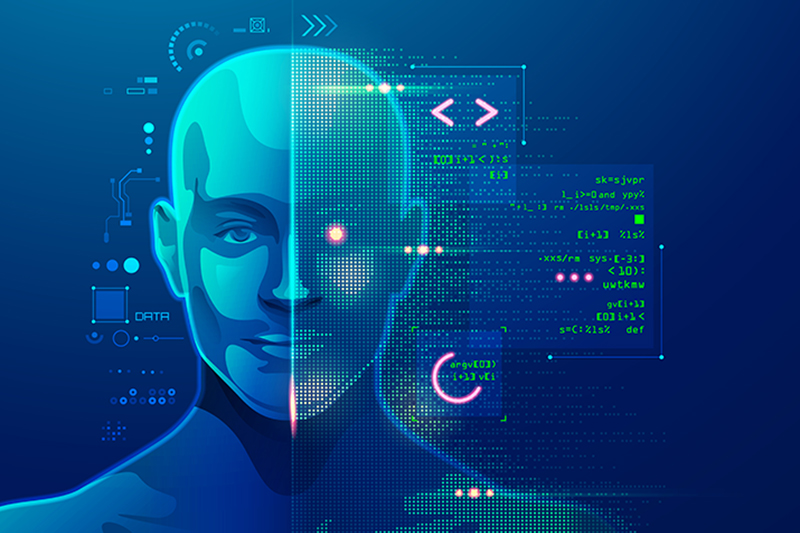An efficient way to turn audio files into written documents is through transcription. The importance of transcribing is growing due to the impact of audiovisual and audio media, and many organizations are investing in digital transcription services with the aim of transcribing their meetings, discussions, calls, etc. into reliable transcripts.
Why AI Transcription Is Becoming Popular
Today, due to the emergence of artificial intelligence and related technologies, many manual tasks have been replaced by automated ones. Businesses and professionals can now save money, time, and other resources using AI. Nowadays, AI is being used to speed up transcription. Transcripts used to be sent to media outlets following significant speeches, or to attorneys in judicial settings. While these purposes are still important, more businesses, academic institutions, and professionals are using transcripts.
Transcripts provide verbatim accounts of conferences, online meetings, and lectures. Additionally, they provide accessible content to people with disabilities, such as hearing loss, who need to read what was said. In these contexts, AI is becoming more and more important in the development and automatic synthesis of transcripts.
What Is AI Transcription?
The foundation of AI transcription is speech-to-text engineering. It eliminates the need for manual procedures, such as having a secretary or note-taker transcribe every word stated in a conference rather, technology is used to “listen in,” capture what is said, and effortlessly transform it into text. The software used by AI transcription has been trained on thousands of hours of human speech.
The transcription tool immediately translates the audio and provides you with a transcript when you upload your audio or video files to a server. Alternatively, you can integrate an AI service into your website or app using an API (application programming interface) to enable real-time transcription. It’s also a strong, reasonably-priced solution for students and office professionals who want to automatically transcribe notes. The two features that make AI transcription different from manual transcription are Speed and API access.
- Speed: Sometimes accuracy is occasionally sacrificed in favor of speed. AI will always be quicker than human transcribing when you need that transcript right away. With AI transcription, you may upload audio and receive a written file in five minutes. Once your file has been uploaded, you will get an ETA.
- API Access: You may do more and save time by using an AI transcription service through an API. Your website, app, or business software can incorporate automatic voice recognition using an API. AI transcription services API claims to be more precise and advanced speaker diarization for English, Spanish, Portuguese, French, and German audio as compared to Google’s speech recognition API.
How Precise Are AI-generated Transcripts?
There are many AI-based transcription service providers available now. While some provide tools for free, others charge for more sophisticated technology that achieves higher accuracy. Regardless of the cost, the time saved when using AI for transcripts is frequently worth the minimal cost associated with using them. With the right provider and service, AI can create transcripts that are accurate. The idea that technology won’t give reliable transcribing results is a misconception.
AI normally performs at 80% or higher accuracy rates on its own, but frequently, and with more use, it performs considerably higher. However, in combination with human transcription, much more accurate transcripts can be produced by AI. This means that human involvement still plays a significant role in the transcription industry.
If the audio is complicated with many accents, background noises, or numerous speakers, human transcription is preferred. Moreover, a manual touch is ideal when accuracy is crucial, such as when producing high-quality copy for customers or for legal purposes. Many organizations like law firms, market researchers, educational institutions, and video producers prefer human transcribing.
| To understand more about both types of transcription read: Comparing and Contrasting AI Transcription and Human Transcription |
Why Manual Transcription Is Important
- Transcribers are skilled, experienced professionals who have received extensive training. They can convert audio to text without diluting the original file’s quality. They possess the necessary typing and decoding skills, as well as the ability to examine and polish text as necessary.
- The likelihood of errors is quite low when using human transcriptionists. They comprehend slang, colloquialisms, and accents and have superb typing abilities, so there are no contextual errors. Many transcription providers also offer a multi-level quality control process to guarantee content quality and accuracy of 98%.
- Transcribers have access to all the necessary transcription tools, making it simple for them to work on audio files of lower quality as well. They can recognize fast switching of speakers in an audio or video, and can transcribe it accurately. With human transcriptionists, there is no failure rate associated with rapid switching.
- Reliable audio transcription services use transcriptionists who thoroughly comprehend the audio and, as a result, produce transcripts with proper syntax, grammar, punctuation, and paragraphs.
Make use of AI-powered solutions if you require quick transcribing and utilize audio transcription services as a supplement to the AI to guarantee the greatest levels of accuracy. To ensure correct transcription, human editors can review the AI-generated transcripts. The key to accurate transcription is finding the right balance between human and artificial intelligence.




